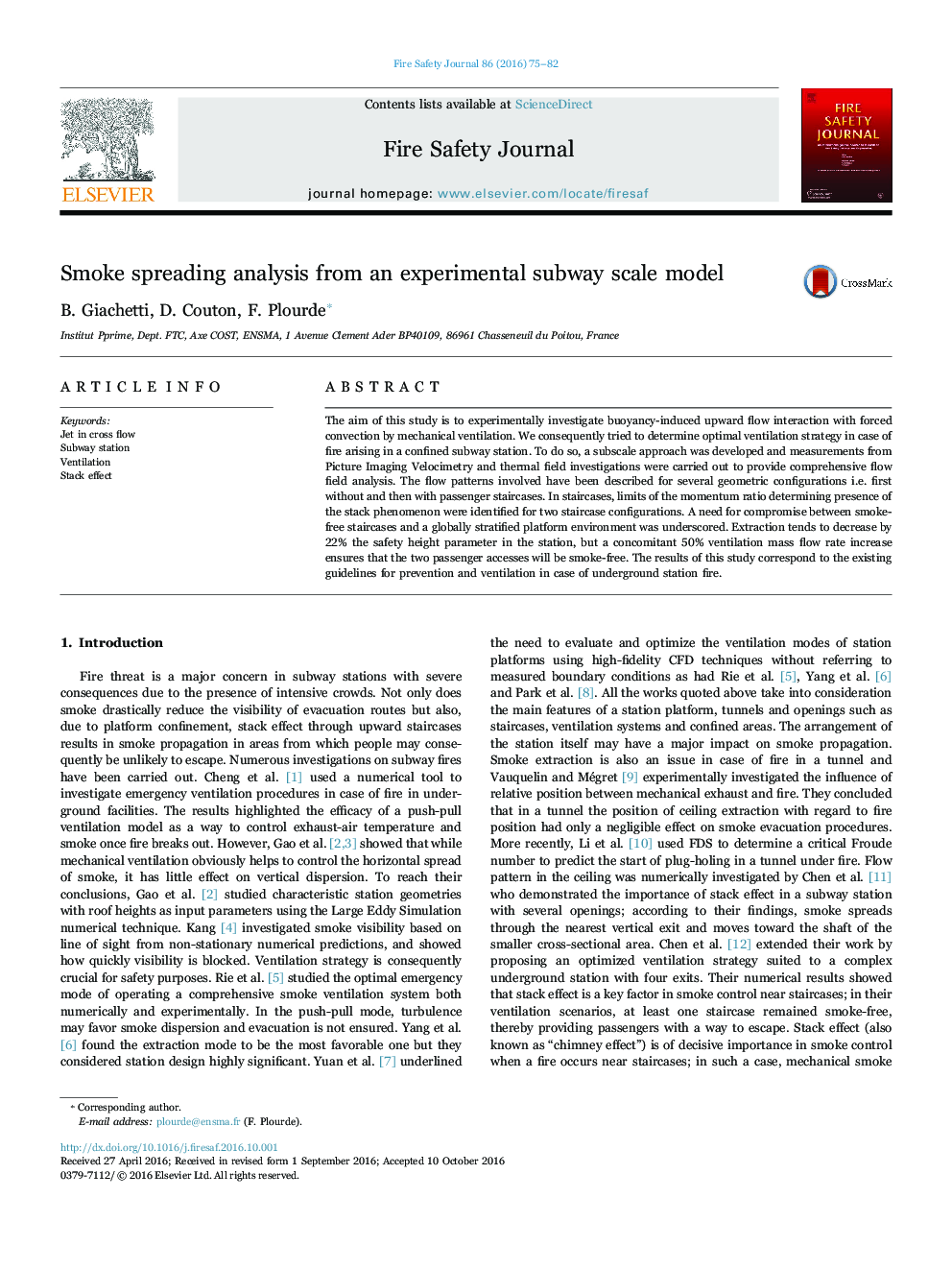| Article ID | Journal | Published Year | Pages | File Type |
|---|---|---|---|---|
| 4921012 | Fire Safety Journal | 2016 | 8 Pages |
Abstract
The aim of this study is to experimentally investigate buoyancy-induced upward flow interaction with forced convection by mechanical ventilation. We consequently tried to determine optimal ventilation strategy in case of fire arising in a confined subway station. To do so, a subscale approach was developed and measurements from Picture Imaging Velocimetry and thermal field investigations were carried out to provide comprehensive flow field analysis. The flow patterns involved have been described for several geometric configurations i.e. first without and then with passenger staircases. In staircases, limits of the momentum ratio determining presence of the stack phenomenon were identified for two staircase configurations. A need for compromise between smoke-free staircases and a globally stratified platform environment was underscored. Extraction tends to decrease by 22% the safety height parameter in the station, but a concomitant 50% ventilation mass flow rate increase ensures that the two passenger accesses will be smoke-free. The results of this study correspond to the existing guidelines for prevention and ventilation in case of underground station fire.
Related Topics
Physical Sciences and Engineering
Engineering
Civil and Structural Engineering
Authors
B. Giachetti, D. Couton, F. Plourde,
